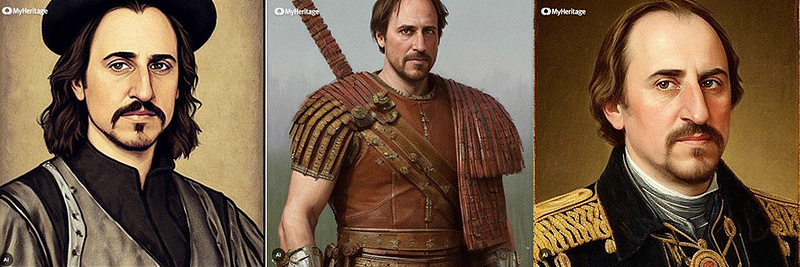AI Avatars: The Unexpected Trend Making Waves in Digital Art
Written on
Chapter 1: The Rise of AI Avatars
In today's digital landscape, the phenomenon of AI-generated art has reached new heights, with two prominent companies leading the charge. The concept is simple yet appealing: transform your selfies into artistic avatars. This innovation resonates well with the selfie-loving generation.

Lensa AI’s Magic Avatars
Lensa AI offers users the opportunity to create personalized avatars by uploading 10 to 20 of their own photos. The resulting images are crafted to resemble those created by a digital artist, utilizing the open-source Stable Diffusion model for processing. For just $7.99, users can generate up to 50 unique avatars.
Since its launch in November, Lensa AI's ‘Magic Avatars’ has surged to the top of the iOS App Store. By early December 2022, it had amassed over 5.8 million downloads and generated approximately $8 million in revenue that month.
The first video titled "This AI Avatar Just Changed The World" explores how Lensa AI has altered the landscape of avatar creation, showcasing user experiences and artistic transformations.
MyHeritage AI Time Machine
In contrast, MyHeritage's ‘AI Time Machine’ takes a unique approach by allowing users to see themselves in various historical settings. This feature gained widespread attention after being featured on morning shows globally.
Rather than being a mobile application, MyHeritage operates as an online service that requires users to create a free account. By uploading 10 to 20 photos, users can access 20 complimentary themes, which generate 160 images depicting them as figures like a Persian warrior or a Roman aristocrat.

If users are satisfied with their results, they can pay an additional $12 for another set of 20 themes. MyHeritage also employs Stable Diffusion for its avatar creations.
What Lensa and MyHeritage Do Right
These platforms excel in making the process user-friendly. Most individuals already have numerous photos saved on their devices, allowing them to easily upload images and let the applications perform their magic. Additionally, the playful nature of seeing oneself as a historical character or in a more glamorous light adds to the fun.
Moreover, this trend encourages sharing, creating a ripple effect. As more users share their avatars, others are drawn to participate.
Privacy Concerns
Despite the excitement, some individuals express concerns regarding privacy and the use of personal likenesses by AI. While these concerns are valid, they may be somewhat misplaced. Why worry about uploading 10 selfies to a single app when countless personal photos are shared on platforms like TikTok, Instagram, and Google Photos daily? The AI used on these social media sites often poses greater privacy risks than a handful of selfies.
Final Thoughts
Who would have imagined that AI avatars would serve as a gateway to generative AI art? Yet, here we find ourselves. With generative AI art gaining mainstream traction, we can anticipate even more innovative applications emerging in 2023.
Chapter 2: The Controversy of AI Art
The second video titled "AI Art Trend Sparks HUGE Debate and TRACING Scandal" delves into the ongoing discussions surrounding the ethical implications of AI-generated art, highlighting both supporters and critics in this evolving landscape.